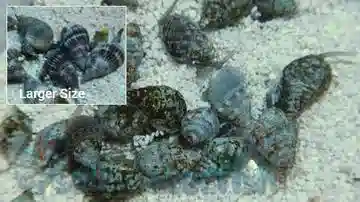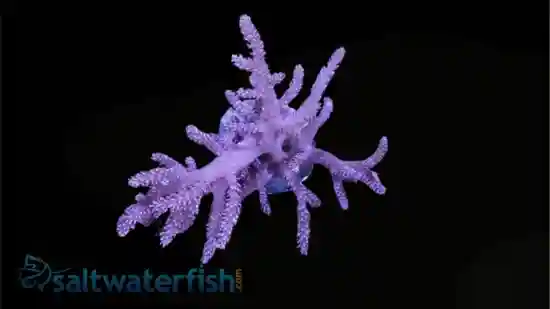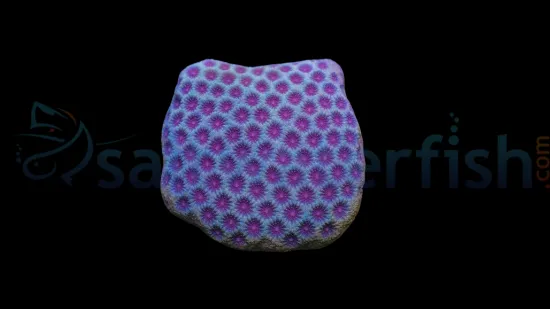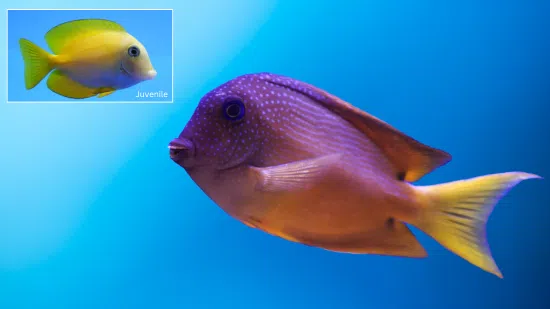Short Tail Bristletooth Tang
Ctenochaetus cyanocheilus
(0 Reviews)
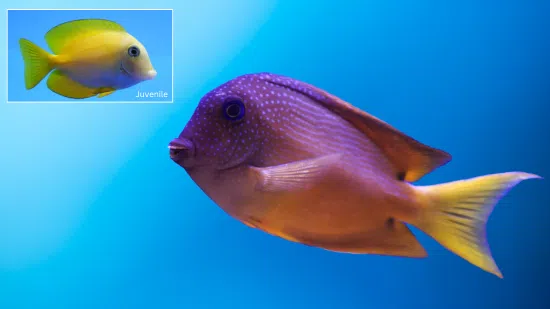
Short Tail Bristletooth Tang
Ctenochaetus cyanocheilus
(0 Reviews)
{{ item.name }}
Size: {{ item.extra_field_3 }}
${{ getFormattedPrice(item.saleprice) }} ${{ getFormattedPrice(item.price) }}
To join the waiting list, click here
Free Shipping
With
$199.00
or more in Marine Life.
More details...
Short Tail Bristletooth Tang Care Facts
| Care Level: | Moderate |
|---|---|
| Temperament: | Semi-Aggressive |
| Diet: | Herbivore |
| Origin: | Indo-Pacific Ocean |
| Acclimation Time: | 2+ hours |
| Reef Safe: | Yes |
| Minimum Tank Size: | 70 gallons |
| Max Size: | 6 inches |
The Short Tail Bristletooth Tang (Ctenochaetus cyanocheilus) otherwise known as the Blue lip tang is a species of tang that has a dark gold/brown body with pale yellow stripes on their body, and small spots dotted on their head with beautiful blue lips and edges on their fins. Juveniles of this species look very different to their adult counterpart with bright yellow bodies and almost non noticeable stripes. They are herbivorous, feeding on macro algae and seaweed, and should have plenty of space to swim. They reach a maximum size of 6 inches, require a tank of at least 70 gallons, and should be kept with other fish of similar size and temperament. They are beneficial to reef aquariums as they help remove unwanted algae from corals or rocks.
Short Tail Bristletooth Tang (Ctenochaetus cyanocheilus) Care Guide
The Short Tail Bristletooth Tang, scientifically known as Ctenochaetus cyanocheilus, is a fascinating addition to a saltwater marine aquarium. This guide provides practical and informative insights into the care and maintenance of the Short Tail Bristletooth Tang, addressing various aspects of their husbandry.
Habitat of the Short Tail Bristletooth Tang:
The Short Tail Bristletooth Tang is typically found in the pristine coral reefs of the Indo-Pacific, where they graze on algae covering the rocky substrates. In an aquarium, replicating some natural habitat elements is vital for their well-being.
Reef Compatibility with the Short Tail Bristletooth Tang:
This species is generally considered reef safe as they predominantly feed on algae and pose minimal threat to corals and other invertebrates. However, they may graze on desirable microalgae, so providing them with ample macroalgae and suitable food options can help maintain a balanced reef environment.
Size and Lifespan of the Short Tail Bristletooth Tang:
Short Tail Bristletooth Tangs usually grow to an average size of 6 inches (18 cm) in a well-maintained aquarium. They can live for 7 to 10 years with proper care, offering a long-term commitment for marine enthusiasts.
Diet in Captivity for the Short Tail Bristletooth Tang:
In a captive environment, these tangs are primarily herbivorous, primarily consuming filamentous algae. To meet their dietary requirements, providing them with high-quality marine flakes and pellets tailored to herbivorous fish is crucial. Additionally, offering fresh or frozen marine algae, such as nori, will meet their nutritional needs.
Aquaculture and Availability of the Short Tail Bristletooth Tang:
While wild-caught Short Tail Bristletooth Tangs are available, aquacultured specimens are not. When purchasing from a reputable supplier like Saltwaterfish.com, you can be confident that your Short Tail Bristletooth Tang is ethically sourced and acclimated to aquarium life.
Compatibility with Other Fish and Invertebrates for the Short Tail Bristletooth Tang:
Short Tail Bristletooth Tangs are generally peaceful and can coexist with various marine fish and invertebrates. However, as with many tangs, territorial disputes can arise, especially in smaller tanks. Providing plenty of swimming space and hiding spots within the aquarium can help mitigate potential conflicts.
Sexual Dimorphism in the Short Tail Bristletooth Tang:
These tangs do not display significant sexual dimorphism, meaning that males and females share similar physical characteristics and coloration.
Juvenile to Adult Coloration Changes in the Short Tail Bristletooth Tang:
Juvenile Short Tail Bristletooth Tangs often boast vivid colors and striking patterns, which can evolve and intensify as they mature into adults. Their unique appearance remains a highlight throughout their life.
Temperament of the Short Tail Bristletooth Tang:
The Short Tail Bristletooth Tang is known for its peaceful and non-aggressive temperament, making it a suitable candidate for community aquariums. However, territorial behavior can surface, especially in smaller tanks, so providing enough space and hiding spots is essential.
Tank Requirements for the Short Tail Bristletooth Tang:
To ensure the well-being of your Short Tail Bristletooth Tang, it is crucial to provide a tank of at least 70 gallons (approximately 264 liters). A larger tank will further enhance their quality of life and help reduce territorial disputes. Consistently maintaining water quality is essential, including a pH level of 8.1 to 8.4, a salinity level of 1.020-1.025, and a temperature range of 74-82°F (23-28°C). Adequate water flow, a protein skimmer, and regular water changes are essential for optimal conditions.
Common Names of the Short Tail Bristletooth Tang:
The Short Tail Bristletooth Tang is also known by the common name Blue Lip Tang.
Compatible Tank Mates With the Short Tail Bristletooth Tang:
Here are five suitable tank mates to consider when housing your Short Tail Bristletooth Tang:
- Flame Angelfish (Centropyge loricula)
- Yellow Tang (Zebrasoma flavescens)
- Orchid Dottyback (Pseudochromis fridmani)
- Ocellaris Clownfish (Amphiprion ocellaris)
- Cleaner Shrimp (Lysmata amboinensis)
Why Choose Short Tail Bristletooth Tang from Saltwaterfish.com:
Choosing the Short Tail Bristletooth Tang from a reputable supplier like Saltwaterfish.com ensures you receive healthy, acclimated fish. Saltwaterfish.com is committed to responsible sourcing and ethical practices, making it a preferred choice for marine enthusiasts.
In conclusion, the Short Tail Bristletooth Tang, with its captivating colors and tranquil nature, is an excellent addition to your saltwater marine aquarium. By providing proper care, ample space, and a balanced diet, you can enjoy the beauty of this species for many years to come.
Currently Short Tail Bristletooth Tang does not have any reviews.


